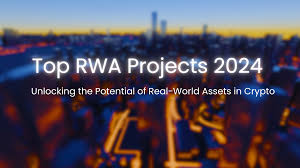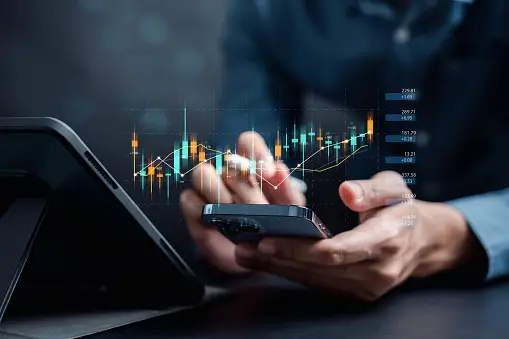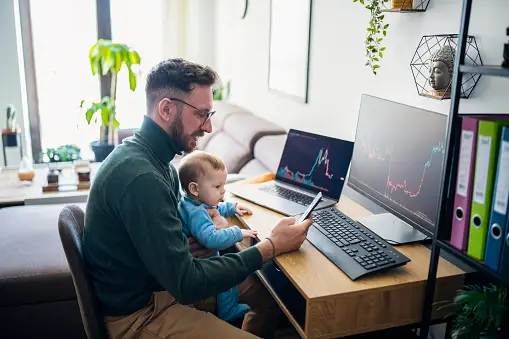The tokenization of real-world assets (RWA) has rapidly become a hot topic in the world of blockchain and decentralized finance (DeFi). The term “RWA” refers to the process of representing physical or real-world assets on the blockchain, bringing them into the digital realm. With prominent projects like $RIO leading the charge, RWAs are set to redefine the way assets are owned, traded, and managed. But what exactly are RWAs, and why is their potential so significant?
What Are RWAs?
RWAs, or Real World Assets, refer to physical assets such as real estate, commodities, or even art and equities, that are tokenized on the blockchain. This tokenization allows these assets to be bought, sold, or traded like any other digital asset, offering a transparent, secure, and decentralized method of ownership.
In simple terms:
- Real World Assets: These are tangible assets that exist outside of the digital realm, such as real estate properties, stocks, bonds, and commodities.
- Tokenization: The process of converting ownership rights of a physical asset into a digital token on a blockchain.
- Blockchain: A decentralized ledger that ensures transparent and immutable ownership through cryptographic proof.
Key Benefits of RWAs
- Accessibility and Inclusivity: Tokenizing real-world assets enables fractional ownership, meaning investors don’t need to buy an entire property or an expensive asset. Instead, they can buy a fraction of it, making these assets accessible to more people globally.
- Enhanced Liquidity: Real estate, fine art, and other traditionally illiquid assets can be made tradable through tokenization. This gives investors the ability to quickly buy and sell portions of these assets in a way that was previously impossible.
- Transparency and Security: Blockchain’s inherent qualities of transparency and immutability ensure that ownership of these tokenized assets is secure, easily traceable, and immune to fraud or tampering.
- Reduced Transaction Costs: Tokenization can reduce the need for intermediaries like banks, brokers, and legal services. This results in fewer fees and lower transaction costs, benefiting both buyers and sellers.
How RWA Projects Work
RWA projects aim to take physical, real-world assets and put them on-chain through tokenization. For instance, a real estate company might tokenize its properties, selling tokens that represent partial ownership of these properties to investors.
Each token is backed by the underlying asset, and its value is derived from the asset’s worth. Ownership and transactions related to these tokens are recorded on a blockchain, making the process secure and immutable.
$RIO and the Rise of RWAs
One of the key players in the RWA ecosystem is $RIO, which has seen significant interest but is currently 70% down from its all-time high (ATH). Despite the dip, the underlying bullish catalysts for $RIO remain strong, and many experts believe it’s only a matter of time before the token hits new heights. Investors like Richard Seiler have emphasized that this dip is a “gift for previous faders,” as RWA projects, particularly $RIO, continue to gain traction.
Bullish Catalysts for RWA Growth
- Institutional Adoption: Major financial institutions and traditional asset managers are beginning to see the value in tokenizing assets. As this adoption grows, the demand for RWA projects like $RIO is expected to increase exponentially.
- Regulatory Clarity: As governments and regulators begin to establish clearer rules around tokenized assets, the path to mass adoption becomes smoother. Regulation will likely play a crucial role in legitimizing RWAs, increasing trust among investors.
- Innovation in DeFi: RWAs provide a bridge between traditional finance (TradFi) and decentralized finance (DeFi), opening up new avenues for financial products such as loans, mortgages, and derivatives based on tokenized assets.
The Future of RWAs: A Two-Digit Horizon?
The future of RWAs is incredibly bright. As more assets are brought on-chain, the tokenization of real-world assets is poised to revolutionize industries ranging from real estate to commodities. While projects like $RIO might experience short-term price fluctuations, the long-term growth potential is immense. Experts like Richard Seiler believe that hitting double-digit prices for $RIO is not a question of “if,” but “when.”
With major bullish catalysts on the horizon, the tokenization of RWAs represents one of the most promising use cases for blockchain technology today.
Stay updated on the latest developments in the world of RWAs and DeFi by following us on our socials:
🔗 Twitter 🔗 Instagram 🔗 WhatsApp
ENG WANJIKU
Views: 14




